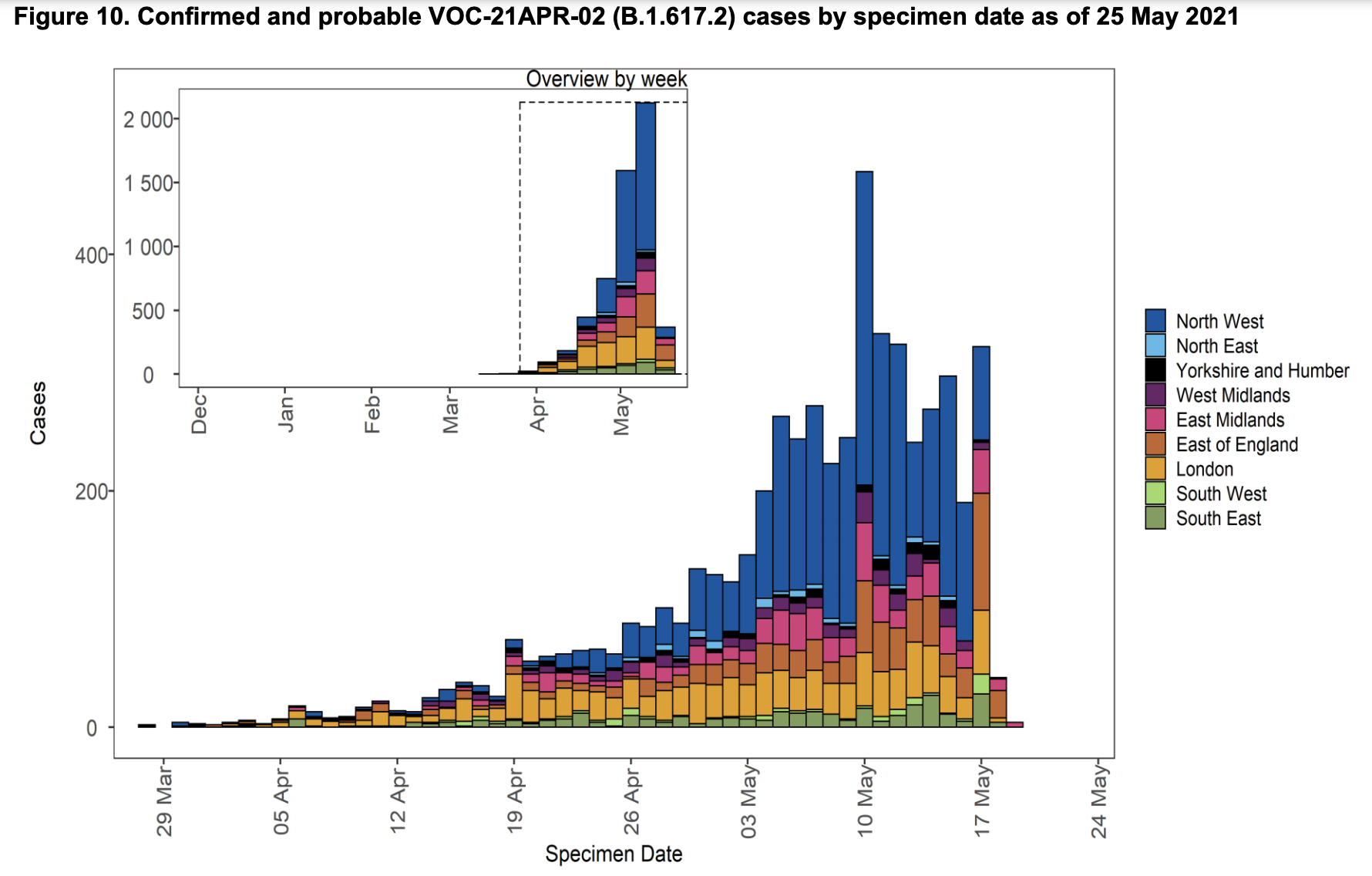Bolton remains the hotspot for COVID-19 and the Indian variant, in particular, but cases are popping up all over
There are reports of the Indian variant of COVID-19 (B.1.617) popping up all over Britain, as Health Secretary, Matt Hancock, revealed yesterday that up to 75% of new cases could be assigned to the specific strain.
But where are cases of the coronavirus variant being seen? Well, while Bolton continues to be suffering from the highest numbers of Covid cases, with 1,354 confirmed cases of just the Indian strain in Bolton over the past couple of weeks – 49 of which are currently in hospital – surrounding areas have been also been affected and there are reports of cases up and down the country.
As well as more immediate neighbours like Blackburn, Wigan and Manchester, flare-ups have also been seen in Leicester, Nottingham, Birmingham and across London. While the variant is most prominent in the western boroughs of the capital, numbers have been noted in Croydon and beyond the capital.
 Source: PHE
Source: PHEIn total, more than 200 recognised local areas in England have reported at least one case of the variant in the most recent set of data and, as such, the government is continuing to urge caution amongst the general public.
According to Public Health England’s (PHE) most recent data, 5,599 cases have been detected since February, with more than 60% of those diagnosed not having received a single dose.
Scientists remain confident that the current vaccines still works against this Indian variant; in fact, a recent study showed that the Pfizer and Oxford-AstraZeneca jabs are effective against the strain. While it does not present any added health concerns, it is known to be more transmissible.
Hancock, who Cummings accused of lying in the recent sub-committee, did warn that the June 21st date could be jeopardised if the Indian variant isn’t kept under control.
Dr Jennie Harries, chief executive of the UK Health Security Agency, said in the Downing Street press conference that the ‘end of lockdown’ is “really just on the cusp at the moment. If we see cases rise, we’re not clear yet quite whether that is a rise in the variant cases taking off or whether it’s actually a rise because we are actively, quite rightly, detecting them and challenging these chains of transmission”.
Meeting indoors was once again allowed on May 17th but SAGE scientists are still fearful it could cause a spike, as Sir Jeremy Farrar said we have now undertaken the “most difficult policy decision of the last 15 months or so”.







































